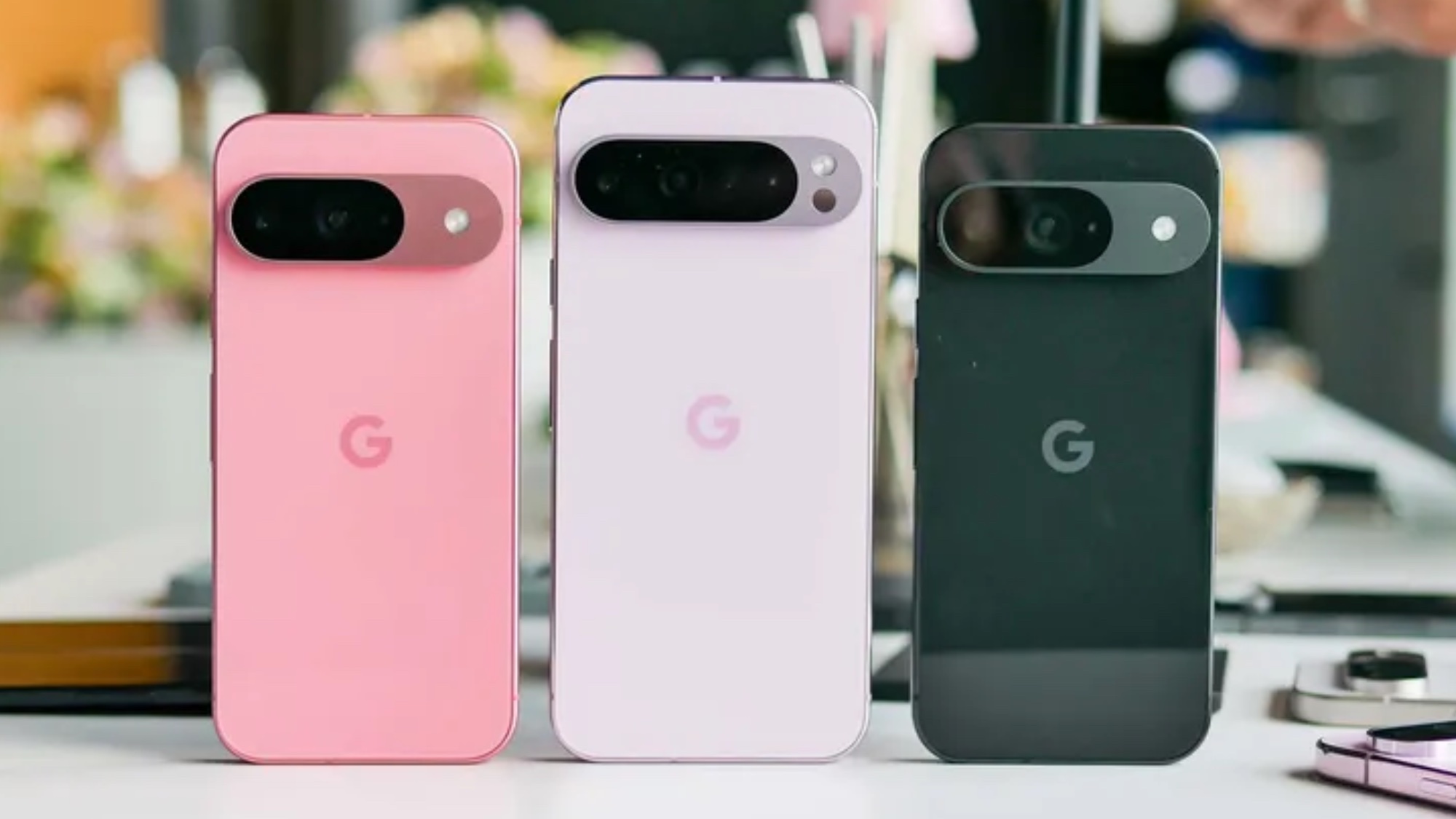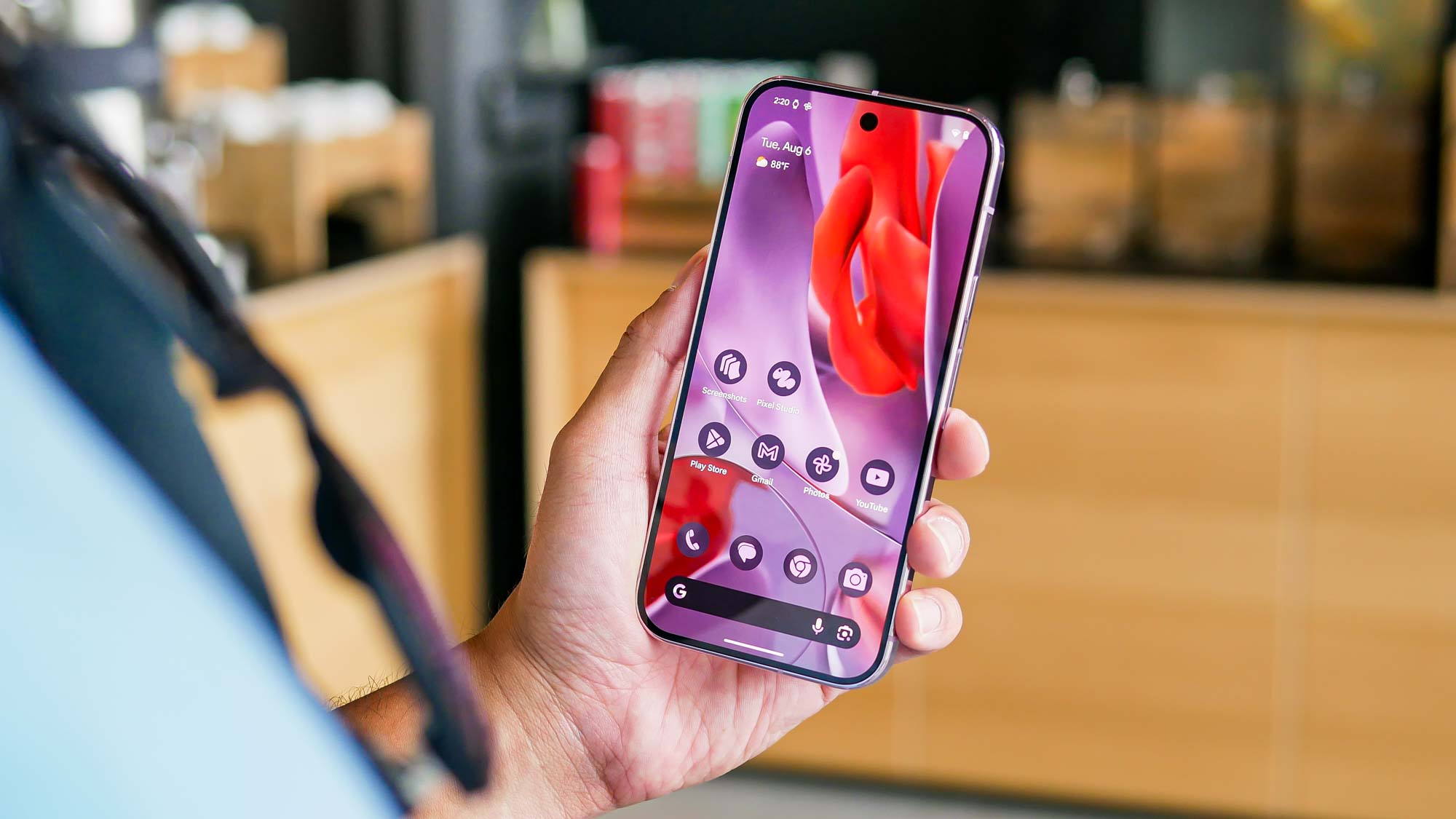Google Pixel 9 vs Pixel 9 Pro vs Pixel 9 Pro XL: What's the difference?
They have a lot more in common than you think

Google makes it a bit more complicated this time around when it comes to choosing which of its new Pixel phones to choose. Unlike last year that technically consisted of two models, the Pixel 8 and Pixel 8 Pro, this year’s Made by Google event yielded three new models: the Pixel 9, Pixel 9 Pro, and Pixel 9 Pro XL.
One could easily surmise where they rank based on the naming conventions, but there’s more to it than just that. In addition to differing in size, design, and hardware, they also have their own share of AI features that add to the confusion. Google didn’t exactly make it explicit as to what features are coming to what device, so we’re going to simplify things to make it easier on you.
Here’s a quick summary on the most important details about the differences between the Pixel 9, Pixel 9 Pro, and Pixel 9 Pro XL — but I’ll dig into more detail in the respective sections.
Google Pixel 9, 9 Pro, & 9 Pro XL: Biggest differences
- Pricing for the Pixel 9, 9 Pro, and 9 Pro XL are $799, $999, and $1,099 respectively.
- The only difference in their designs apart from their sizes is the matte glass backs of the Pro models and the polished glass casing of the standard Pixel 9.
- All three phones gain nearly the same set of new AI tools such as Add Me, Pixel Studio, Pixel Screenshots, and more.
- You gain an extra telephoto camera with 5x optical zoom with the two Pro models.
- Battery sizes differ between them, as well as their wired and wireless charging speeds.
- Tensor G4 powers all three Pixels.
- Gemini Advanced is available for free for the first year with the Pro models.
Google Pixel 9, 9 Pro, & 9 Pro XL: Specs
| Row 0 - Cell 0 | Google Pixel 9 | Google Pixel 9 Pro | Google Pixel 9 Pro XL |
| Screen size | 6.3-inch Actua | 6.3-inch Super Actua | 6.8-inch Super Actua |
| Display resolution | 1080 x 2424 | 1280 x 2856 | 1344 x 2992 |
| CPU | Tensor G4 | Tensor G4 | Tensor G4 |
| RAM | 12GB | 16GB | 16GB |
| Storage | 128GB, 256GB | 128GB, 256GB, 512GB, 1TB | 128GB, 256GB, 512GB, 1TB |
| Rear cameras | 50MP (f/1.68) main, 48MP (f/1.7) ultrawide | 50MP (f/1.68) main, 48MP (f/1.7) ultrawide, 48MP (f/2.8) telephoto (5x zoom) | 50MP (f/1.68) main, 48MP (f/1.7) ultrawide, 48MP (f/2.8) telephoto (5x zoom) |
| Front camera | 10.5MP (f/2.2) | 42MP (f/2.2) | 42MP (f/2.2) |
| Video recording | up to 4K 24/30/60 FPS | up to 8K 30 FPS | up to 8K 30 FPS |
| Battery size | 4,700 mAh | 4,700 mAh | 5,060 mAh |
| Wired charging speed | 27W | 27W | 37W |
| Wireless charging speed | 12W (15W with Google Pixel Stand 2nd gen) | 12W (21W with Google Pixel Stand 2nd gen) | 12W (23W with Google Pixel Stand 2nd gen) |
| Colors | obsidian, porcelain, wintergreen, peony | obsidian, porcelain, hazel, rose quartz | obsidian, porcelain, hazel, rose quartz |
| Size | 6 x 2.8 x 0.3-inches | 6 x 2.8 x 0.3-inches | 6.4 x 3 x 0.3-inches |
| Weight | 7.0 oz | 7.0 oz | 7.8 oz |
Google Pixel 9 vs Pixel 9 Pro vs Pixel 9 Pro XL: Design

I bet you can tell which devices are what solely by their size. Given the ‘XL’ in its name, the Pixel 9 Pro XL is the biggest and heaviest of the bunch at 6.4-inches long and weighing in at 7.8 ounces. Unless you have a penchant for larger phones, you might prefer the hand friendlier sizes of the Pixel 9 and Pixel 9 Pro — which are identical in size and weight.
After playing around with all three phones, the other clear differences between their designs are their materials and finishes. The Pixel 9 Pro and 9 Pro XL have a matte glass rear back with a polished metal trim. In my Pixel 9 Pro and 9 Pro hands-on review, I call out how the flat edges of the new design make it look awfully similar to the iPhone 14 Pro.
Meanwhile, the Pixel 9 has a glossy glass casing with a satin metal frame — the latter of which gives it the titanium alloy look of the iPhone 15 Pro. And, finally, the Pixel 9 has a smaller glass cutout with its rear cameras.
Google Pixel 9 vs Pixel 9 Pro vs Pixel 9 Pro XL: Display

The Pixel 9 and 9 Pro both feature a 6.3-inch screen, while the Pixel 9 Pro XL takes it up to 6.8 inches. Due to their respective resolutions, the Pixel 9 Pro turns out to be the most pixel dense screen at 495 ppi — but it’s honestly tough to tell by looking at all of them.
Sign up to get the BEST of Tom's Guide direct to your inbox.
Get instant access to breaking news, the hottest reviews, great deals and helpful tips.
Both ‘Pro’ models get an adaptive refresh rate of 1-120Hz, while the Pixel 9 has a narrower margin with its 60-120Hz refresh rate. I honestly again couldn’t tell the difference when I loaded up the same 4K HDR clip on YouTube I use to test out their displays.
However, the biggest difference will come down to how bright they get. Google rates the Pixel 9 with up to a peak brightness output of 2,700 nits, while the Pro models go higher up to 3,000 nits. Even as I watched those clips indoors, it was tough to tell if the Pro Pixels were brighter than the Pixel 9, but our testing will uncover which one gets the brightest.
Google Pixel 9 vs Pixel 9 Pro vs Pixel 9 Pro XL: Cameras
One thing I have to applaud Google for is how all three phones share the same 50MP main and 48MP ultrawide cameras. If you want the extra utility of zooming with an optical lens, the Pixel 9 Pro and 9 Pro XL has you covered with their 48MP telephoto camera with 5x optical zoom.
I’m more impressed that both Pixel 9 Pro phones actually get the same optical zoom range, mainly because the bigger phone usually gets the longer ranged telephoto shooter. Due to their 5x optical zoom cameras, the Pixel 9 Pro and 9 Pro XL can get up to a 30x digital zoom — whereas the Pixel 9 tops out at 8x.
While all three Pixels now offer autofocusing with their front-facing cameras, the Pro models get the better 42MP camera with a wider 103-degree field of view. The Pixel 9 gets a 10.5MP one with a slightly narrower 95-degree field of view. For those who want finer controls to how photos are taken, Pro Controls are only available on the Pro models.
There’s a difference in how they record videos, too, with a more futureproof 8K video recording option with the Pro phones. Meanwhile, the Pixel 9 dials it down to a still respectable 4K video recording at 24/30/60 FPS. At the same time, you’ll find more video features with the Pro devices with features like Video Boost, Night Sight Video, and Super Res Zoom Video.
Google Pixel 9 vs Pixel 9 Pro vs Pixel 9 Pro XL: Performance

This one’s an easy comparison because the Tensor G4 powers all three phones, along being accompanied by the Titan M2 security coprocessor. RAM and storage sizes are the only meaningful differences here, as the Pixel 9 features 12GB and comes in either 128GB or 256GB capacities. Meanwhile, the Pixel 9 Pro and 9 Pro XL come with 16GB of RAM and are available in 128GB, 256GB, 512GB, and 1TB storage options.
I was actually pleased by their level of responsiveness running apps and such, but I was astounded by how quickly they also handle AI features with little wait. I suspect that the increased RAM in the Pro models would allow them to better manage these AI features, resulting in shorter wait times — but only time will tell after testing them out.
Google Pixel 9 vs Pixel 9 Pro vs Pixel 9 Pro XL: Battery

The Pixel 9 Pro XL benefits from a 5,060 mAh battery that could effectively help it to last longer. Since last year’s Pixel 8 Pro beat out the Pixel 9 running Tom’s Guide’s battery benchmark test, I’m inclined to say that the Pixel 9 Pro XL will top the list here. In contrast, the Pixel 9 and Pixel 9 Pro feature the same 4,700 mAh batteries. I’m eager to see how these two stack up because of how closely related they are.
Their charging speeds also differ by a wide gap, with the 9 Pro XL gaining the fastest speed with 37W wired charging — while the other two top out at 27W. Wireless charging speeds also vary between the three: 15W, 21W, and 23W speeds for the 9, 9 Pro, and 9 Pro XL. However, those are assuming you’re going to be using the 2nd Gen Pixel Stand. If not, you’re looking at slower 12W wireless speeds using Qi wireless chargers.
Google Pixel 9 vs Pixel 9 Pro vs Pixel 9 Pro XL: Software and AI features

Even though Android 14’s launching on all three devices, they’re still getting the same outstanding 7 years of major Android software and security updates. What’s even more remarkable is that Google’s not making certain AI features exclusive to specific devices, as all three models gain all new Google Pixel 9 AI features introduced at the Made by Google Event — Add Me, Pixel Studio, Reimagine, Call Notes, Pixel Weather app and Pixel Screenshots.
The only difference in their features set relates to Gemini. You’ll be able to tap into the Gemini app on all three devices, but only the Pro models will be able to access Gemini Advanced at no cost for the first year with the Google One AI Premium Plan. This will give the Pixel 9 Pro and 9 Pro XL to the best Google AI features, as well as 2TB of cloud storage.
Google Pixel 9 vs Pixel 9 Pro vs Pixel 9 Pro XL: Price

And lastly, there’s the price difference between them. You want to know that they’re all technically more expensive than last year’s lineup, especially when you consider how the Pixel 9 Pro XL is effectively the true successor to the Pixel 8 Pro with their similar sized screens.
You’ll need to spend $799 for the base model of the Pixel 9 with 128GB of storage. Next up, the Pixel 9 Pro takes up that typical flagship cost at $999 — while the Pixel 9 Pro XL cranks it up to $1,099. For the $100 difference between the two Pro models, you’re essentially paying for the larger screen, bigger battery and faster charging of the Pixel 9 Pro XL.
More from Tom's Guide

John’s a senior editor covering phones for Tom’s Guide. He’s no stranger in this area having covered mobile phones and gadgets since 2008 when he started his career. On top of his editor duties, he’s a seasoned videographer being in front and behind the camera producing YouTube videos. Previously, he held editor roles with PhoneArena, Android Authority, Digital Trends, and SPY. Outside of tech, he enjoys producing mini documentaries and fun social clips for small businesses, enjoying the beach life at the Jersey Shore, and recently becoming a first time homeowner.

